China's lunar probe soft-lands on moon
Updated: 2013-12-14 21:52
(Xinhua)
|
||||||||
|
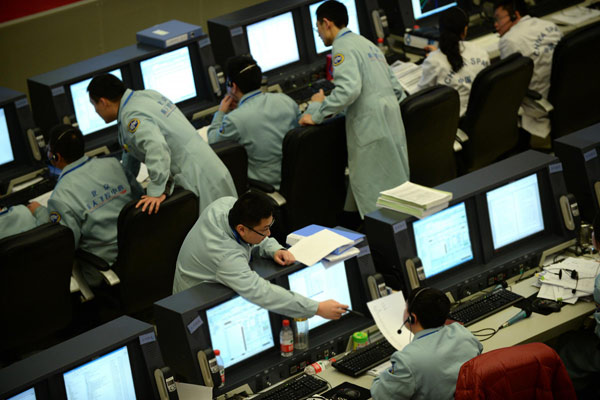 Beijing Aerospace Control Center. [Photo/Xinhua] |
The lunar probe began to carry out soft-landing on the moon at about 21:00 p.m., Saturday and touched down in Sinus Iridum, or the Bay of Rainbows, about 12 minutes later, according to Beijing Aerospace Control Center.
During the process, the probe decelerated from 15 km above the moon, stayed hovering at 100 meters from the lunar surface to use sensors to assess the landing area to avoid obstacles and locate the final landing spot, and descended slowly onto the surface.
The success made China the third country, after the United States and the Soviet Union, to soft-land on the moon.
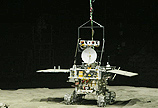 |
| Special |
The probe's soft-landing, which has been termed the "black 12 minutes," is the most difficult task during the mission, said Wu Weiren, the lunar program's chief designer.
Chang'e-3 relied on auto-control for descent, range and velocity measurements, finding the proper landing point, and free-falling.
The soft-landing was carried out 12 days after the probe blasted off on an enhanced Long March-3B carrier rocket.
Chang'e-3 is part of the second phase of China's lunar program, which includes orbiting, landing and returning to the Earth. It follows the success of the Chang'e-1 and Chang'e-2 missions in 2007 and 2010.
The successful landing shows China has the ability of in-situ exploration on an extraterrestrial body, said Sun Huixian, deputy engineer-in-chief in charge of the second phase of China's lunar program.
A renewed moon fever has sprung up in recent years following the lunar probe climax in the 1960s and 1970s.
Chang'e-3 is the world's first soft-landing of a probe on the moon in nearly four decades. The last such soft-landing was carried out by the Soviet Union in 1976.
"Compared to the last century's space race between the United States and the former Soviet Union, mankind's current return to the moon is more based on curiosity and exploration of the unknown universe," Sun said.
"China's lunar program is an important component of mankind's activities to explore peaceful use of space," according to the engineer-in-chief.
For an ancient civilization like China, landing on the moon embodies another meaning. The moon, a main source for inspiration, is one of the most important themes in Chinese literature and ancient Chinese myths, including that about Chang'e, a lady who took her pet "Yutu" (Jade Rabbit) to fly toward the moon, where she became a goddess.
"Though people have discovered that the moon is bleached and desolate, it doesn't change its splendid role in Chinese traditional culture," said Zhang Yiwu, a professor with Peking University.
"Apart from scientific exploration, the lunar probe is a response to China's tradition culture and imagination. China's lunar program will proceed with the beautiful legends," Zhang said.
- Pakistan congratulates China on launch of lunar probe
- Chang'e-3 enters lunar orbit
- US unveils Lucky Money for lunar year
- From pet rabbit to lunar detective
- Chang'e 3 lunar probe to launch
- Chang'e-1, China's first lunar probe
- China successfully launches 2nd lunar probe
- Timeline of China's lunar program

 Illustration: Chang'e-3 soft-lands on moon
Illustration: Chang'e-3 soft-lands on moon
 Mandela's coffin back home village
Mandela's coffin back home village
 Two students wounded in US school shooting
Two students wounded in US school shooting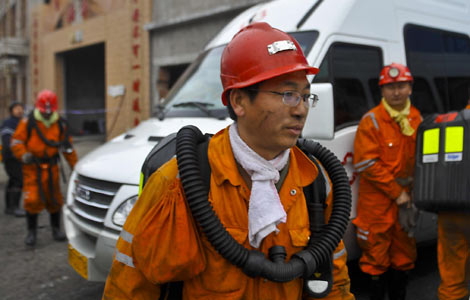
 21 died in Xinjiang coal mine explosion
21 died in Xinjiang coal mine explosion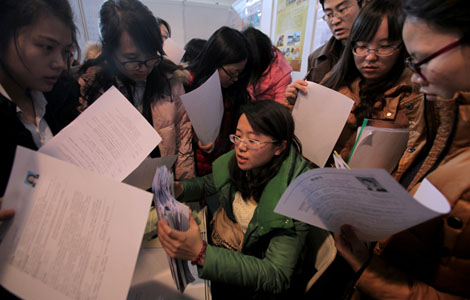
 Postgraduates get hard lessons at job fair
Postgraduates get hard lessons at job fair
 Lippi confident with Guangzhou's opener
Lippi confident with Guangzhou's opener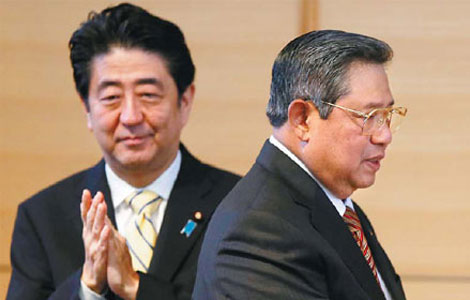
 ASEAN cautious on air zone debate
ASEAN cautious on air zone debate
 Havens of hope open their arms to forsaken infants
Havens of hope open their arms to forsaken infants
Most Viewed
Editor's Picks

|
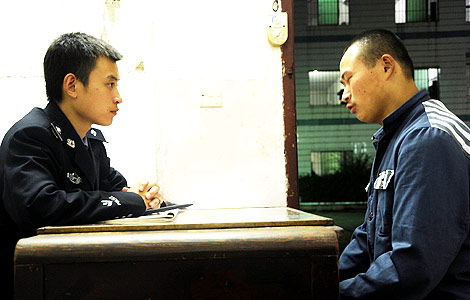
|
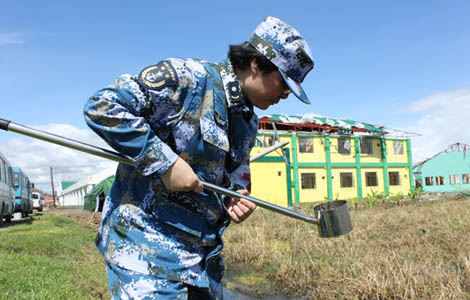
|
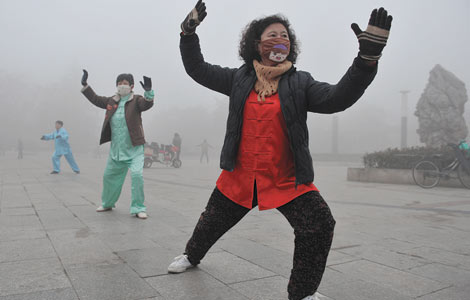
|

|

|
Today's Top News
China's 'Jade Rabbit' rolls to moon surface
China's lunar probe soft-lands on moon
China slams Abe's ADIZ comments
US paves way for in-flight cell phones
ASEAN cautious on air zone debate
Leaders vow to steer steady path
BYD dismisses 'inaccurate and misleading' reports
Execution may hit co-op projects
US Weekly

|

|







